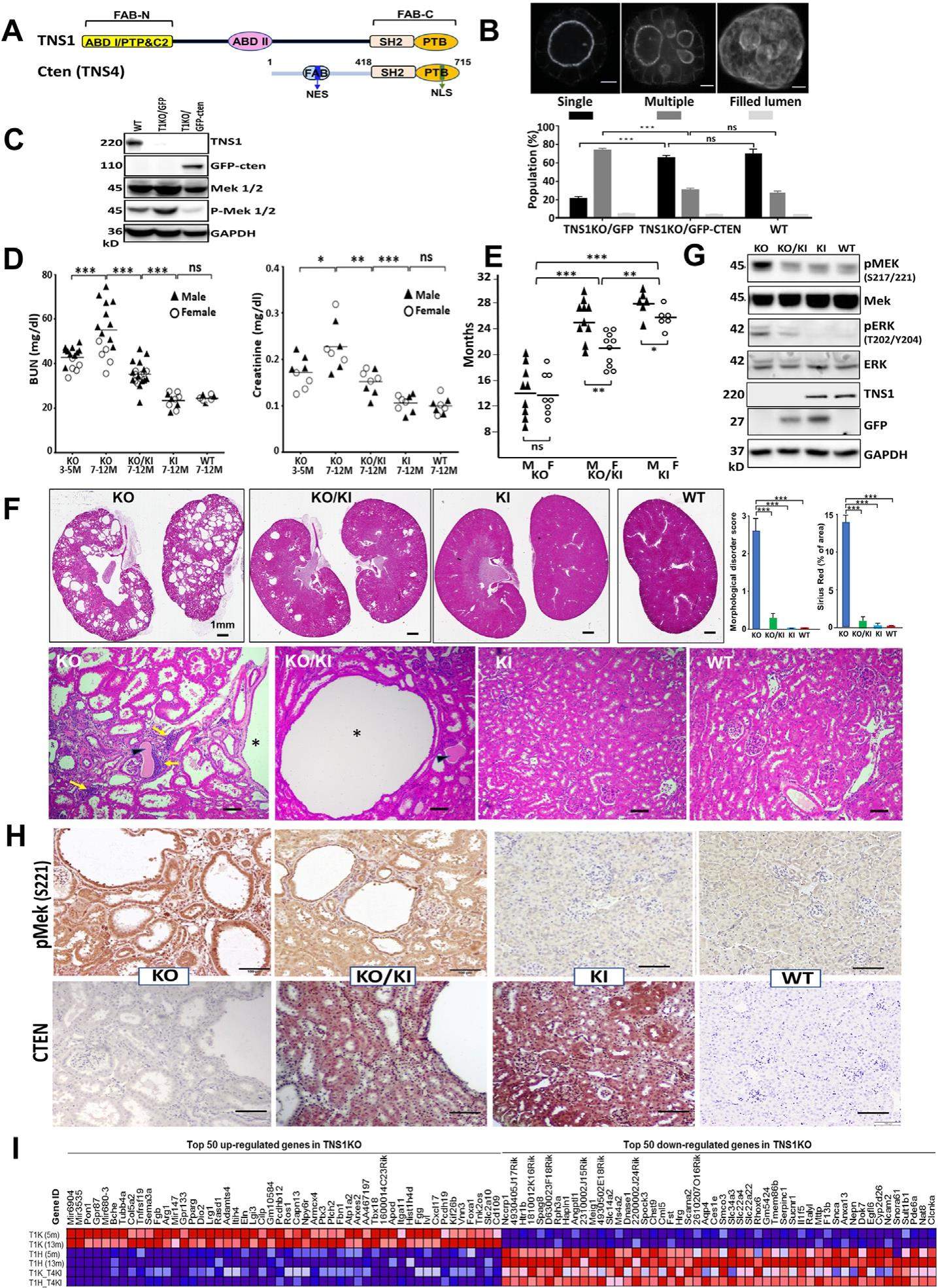
C-terminal tensin-like (CTEN) knockin alleviates cystic kidney defects in Tensin-1 knockout mice


Tensin-1 (TNS1) is a 220 kD focal adhesion protein that binds to actin filaments, integrin receptors, small GTPases, tyrosine phosphorylated proteins, and lipids. These binding activities enable TNS1 to link the actin cytoskeleton to integrins and transduce outside-in and inside-out signals at focal adhesion sites, thereby regulating cell attachment, migration, proliferation, and mechanical sensing. Lack of TNS1 in kidney epithelial cells results in multiple lumen, instead of single lumen, phenotypes in the three-dimensional (3D) culture. Tns1 knockout (Tns1-KO) mice develop cystic kidneys and die from renal failure. These findings demonstrate critical roles of TNS1 inkidney epithelial cells and renal function. CTEN (aka TNS4) is a smaller 78 kD protein that only shares the SH2 and PTB domains with TNS1 and other tensin members. The expression patterns of TNS1, TNS2 and TNS3 in various human tissues are very similar and are frequently down-regulated in cancer samples. In contrast, CTEN expression is restricted to certain tissues, such as prostate and placenta, yet over-expressed in cancers including lung, colon, gastric, and breast cancers. It has been long speculated that CTEN might function as a dominant negative competitor of TNS1 based on its domain structure and expression pattern. However, this idea has not been convincingly demonstrated, especially in animal models.
